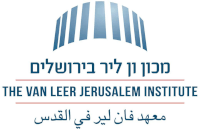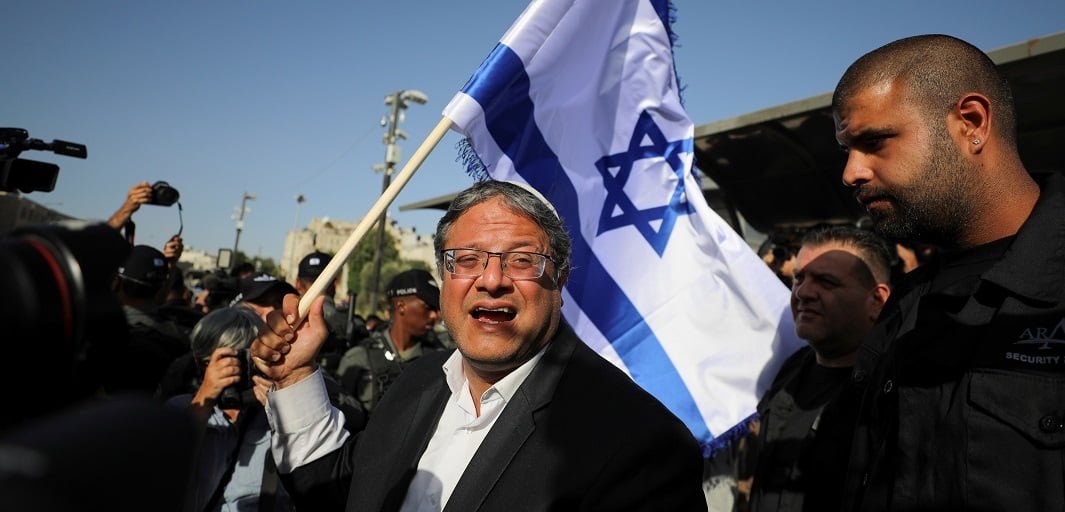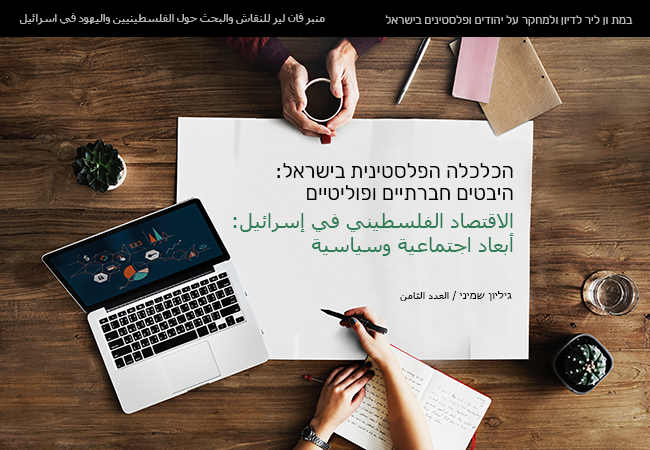The process of Israel’s transformation into a religious-national state based on Jewish supremacy, which was expressed in the 2018 passing of the Nation-State Bill, received a governmental boost in the 2022 elections, with the rise to power of the extreme right headed by the Smotrich-Ben-Gvir-Rotman troika. This threesome is promoting a regime of Jewish supremacy between the Jordan River and the sea, and alongside it, the annexation of territories in the West Bank – a combination that will seal the fate of the classic two-state idea.
The geographic and political reality created in the space between the Jordan and the Sea is speeding up processes that on the one hand contradict the solution of separation, espoused by the Zionist left under the slogan “We are here, they are there,” and on the other hand make it harder for the Jewish right to apply Israeli sovereignty to the territories occupied in 1967. This complicated reality spells a new horizon for the solution of the conflict.
Over the past two decades, Israeli governments have intensified their grip on the West Bank. While the world was busy with other regional and international crises and neglected the Palestinian issue, Netanyahu’s successive governments expanded the settlement enterprise, which has now reached mammoth dimensions. According to the NGO Peace Now (2022 Report), the total number of settlements is now 132, and the number of outposts is 147. According to the Palestinians, there are 471 points of Jewish settlement in the West Bank: settlements, outposts, shepherd farms, tourism sites, as well as industrial parks and army bases. Declarations by the new government indicate clearly its intention to further expand the Jewish settlement in the territories, including legalizing over one hundred outposts and entrusting the management of the settlements to a civil authority – thereby accelerating the annexation of the settlements to the state of Israel. In addition, Jewish Israel controls all the border crossings, and therefore is the sole ruler over everyone who enters or leaves the land between the Jordan and the sea. Moreover, all Palestinian identity cards in the space between the Jordan and the sea are written also in Hebrew, including those of the residents of Gaza. However, in tandem with the de facto annexation, the Palestinian population is growing, and in 2021, a study by the Institute for National Security Studies (INSS) showed that in that year, for the first time, the number of Palestinians exceeded the number of Jews between the Jordan and the sea; in other words, a minority rule is taking shape in this land.
Between Belonging and Ownership
The two people, the Palestinian and the Jewish, live in the space between the Jordan and the Sea and claim ownership of it. Both people sing to their homeland, and they refer to the same piece of land: when the Jew sings “Anu ohavim otakh moledet” (We love you, our homeland), the Arab sings “بلادي بلادي لك حبي وفؤادي”; and when the Arab sings “Al-Ard Btitkallim ‘Arabi” (This land speaks Arabic), the Jew sings “Ein li eretz akheret… / Rak mila b’Ivrit khodered el orkai el nishmati” (I have no other country…/ Just a word in Hebrew pierces my veins and my soul). The Jew dances to the sounds of the children’s song “Kakh makel/ kakh tarmil / bo iti el haGalil” (Grab a cane/ Grab a bag/ Come with me to the Galilee), and the Arab answers with his own song: “جليلنا مالك مثيل وترابك اغلى من الذهب” (Our Galilee no region like you and your soil more value than gold).
The international community regards the Israeli/Palestinian conflict as a national conflict whose solution is the partition of the land into two independent and sovereign states. Yet partnership and not separation is the solution that suits the local geographical-political circumstances. One key circumstance is the obvious demographic mixture within Israel proper: sixty percent of the residents of the Galilee are Palestinian, and over a third of the residents of the Negev are Bedouin-Palestinians. The same phenomenon is present in the cities, too, and the mixing of populations has been intensifying even more with the expansion of the Arab-Palestinian middle class, which is choosing to migrate to Jewish cities to improve its quality of life.
What is more, the Palestinian society tends to ignore the Green Line. Despite the Citizenship Law that discriminates against Palestinians who start a family with people of their own nation from the territories or Arab countries, the phenomenon of cross-border marriages continues, if on a smaller scale. Another interesting development is that Palestinians who are citizens of Israel are buying land and building homes in Palestinian towns and villages in the West Bank, as an expression of their ongoing connection to their people and their homeland. To all of this we need of course to add the most sensitive question of this conflict – the question of the settlers. Today, Jewish settlers constitute about %14 percent of the population of the West Bank and more than a third of the population of East Jerusalem. It’s hard to imagine a political solution that would make this issue go away. The possible return of Palestinian refugees, one of the Palestinians’ central conditions for a peace accord, would also further intensify the mixing of the two populations.
A Shared Economy in the Homeland?
The geographical space between Jordan and the sea is linked by a shared system of transportation. This system was developed after the 1967 occupation and expanded with the expansion of the Jewish settlement in the territories. For example, Route 90 that connects the north of Israel with its south passes through the Jordan Valley; Route 60 starts in Be’er Sheva and crosses the West Bank from Nablus to Hebron; the east-west Highway 5 connects the Tel Aviv metropolitan area with the settlements in the occupied territories. Despite the existence of many apartheid roads in the territories – roads that Palestinians are banned from using – the Palestinians (both residents of the territories and Israeli citizens) do use many roads that Jews also ride.
The electricity and telecommunication infrastructures are also shared: the cities of the West Bank and Gaza are connected to the Israel Electric Corporation and many Palestinians use the services of Bezeq, Israel’s leading telecommunications service provider. The country’s water system includes the groundwater reservoirs and the Jordan river, components that cannot be divided along land borders and which are the main source of water for this entire land. The homeland’s airspace, too, is one, and it is under full Israeli control. In addition, Israel fully controls the cyber and teleprocessing systems even in the West Bank, and Palestinian mobile telecommunication companies need special permits from Israel to operate. In summary, already today the Israeli-Palestinian infrastructures are deeply intertwined.
Where Do We Go from Here?
The political geography of the Israeli-Palestinian space is gradually becoming mixed and difficult to disentangle. The shared economic-demographic reality, the sharing of infrastructures and natural resources, and above all the perception of this space by the two nationalities, each of which considers all of it to be its homeland – all of these require abandoning the solution based on strict separation and a partition of the land. The international community, which has failed to advance the classic two-state solution, the Palestinian leadership, which still clings to this solution, and the Israeli leadership, which today offers no solution to the conflict – must all think outside the box and promote a conversation about a different solution.
A peace solution that respects the rights of both peoples in this homeland must be a solution of partnership and not of separation. The solution proposed here is based on a bi-national confederate structure that will link two independent states whose borders are the 1967 borders. Between the two states there will be freedom of movement, and bi-national institutions based on the principle of equality will be established to administer the shared space. Unified Jerusalem will be the capital of both states, and bi-national frameworks will be established to manage the shared city. This solution will not cause a new injustice in order to redress an historic injustice and will not forcibly uproot residents from their homes – while at the same time allowing the return of Palestinians to their homeland in accordance with UN resolution 194, which was adopted in 1948 but has yet to be implemented.
The partnership-based confederate solution may be permanent, but it may also be an interim solution. Its implementation will allow both nationalities to adjust to a shared existence, to reduce hostility and hatred – and after one or two generations, they may wish to merge into a single state. The space between the Jordan and the sea is a natural shared space for the two peoples, so that it is only fitting and proper that they should find in it an expression of their natural and acknowledged right to self-definition. And the sooner the better.
















